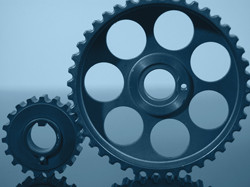Solving tricky contact problems
Examples of applications in contact mechanics include the moving parts of machinery, wheels running on a railroad track and artificial or natural joints in living organisms. A new EU-funded research project 'Nonlinear inclusions, hemivariational inequalities with applications to contact mechanics' (CONTACT) brings together labs in Europe, China and the USA to further the field. Project scientists are developing the complex theoretical methods necessary to fully describe boundary laws involving friction, adhesion, damage thermal effects and wear. The joint training programme and cutting-edge research agenda exploits state-of-the-art technologies. They will also strengthen ties among the partner institutions while fostering rapid development of novel and non-standard mathematical tools. The focus is on classes of contact problems with direct industrial or technical relevance. Staff exchange, meetings, seminars and two workshops are all planned. Already within the first reporting period numerous results have been obtained that promise to improve industrial applications with important economic benefits. Among the systems studied were actuators, bearings, hinges and artificial or live joints. The team has shown that the problems are well-posed (a unique solution exists and essentially small errors in input do not result in large changes in output). Scientists have now developed and run algorithms that compute deformations and stresses in elastic and viscoelastic materials as a function of time and place. All tasks are proceeding according to plan and, in fact, outcomes exceed the original scope of the proposal. New collaborations are blossoming. The end of the project is expected to deliver many valuable new methods for the field of theoretical contact mechanics. The methods will support novel experimental work and engineering advances.



